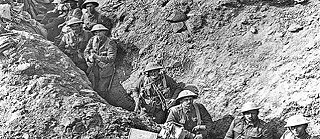Voices of Memory
Historical Background
Ireland in 1916

For most Irish people, 1916 signifies the Easter Rising, which caused over 450 deaths, destroyed much of central Dublin, and radicalised Irish politics. For diverse reasons, this seemingly irrational rebellion is celebrated as the foundation of modern Ireland. Militant republicans revere the rebels as role-models, martyrs who vindicated violence without democratic sanction as a political instrument. Conventional politicians, while denying that the rebellion legitimised more recent terrorist campaigns, revere the rebels for the egalitarian sentiments of the so-called Proclamation of the Irish Republic. Most commentators accept that the rebellion, though lacking prior popular support, drew upon deep feelings of resentment against British oppression, latent desire for full independence rather than partial autonomy within the United Kingdom, and romantic attachment to grand gestures rather than plodding compromises. Some maintain that radical nationalism had gained support since the outbreak of European war in August 1914, as Irish casualties and wartime privations multiplied. What else could explain the rapid post-rebellion shift in popular support from John Redmond’s Home Rule movement to the republican demands of what became known as Sinn Féin? If nationalists were not unreconciled separatists at heart, why were they so outraged by 16 executions and the incarceration of a few thousand political dissidents?
Yet this portrayal of wartime Ireland, framed by hindsight, would have been unrecognisable to contemporaries. When Redmond’s support for the imperial war effort split the nationalist Irish Volunteers in autumn 1914, only about 10,000 (5%) repudiated Redmond’s leadership. Apart from modest recruitment for the Irish Republican Brotherhood, there was little evidence of declining nationalist endorsement of the ‘constitutionalist’ strategy. Most believed that Home Rule, having been enacted in September 1914 but suspended during the war, would indeed be implemented thereafter with some special provision for unionist Ulster. Both Redmond and the Irish unionist leader Sir Edward Carson had ostentatiously supported the war against Germany, in the hope of strengthening their contending political claims once peace returned. They also sincerely hoped that putting nationalists and unionists alike into the field of battle would erode domestic animosities, and reconcile potential rebels (unionist as well as nationalist) to future coexistence within the Empire. Asquith’s Liberal government, even after unionists including Carson were admitted into coalition in May 1915, had done its utmost to avoid alienating nationalists, exempting Ireland from conscription in February 1916.
Prior to the rebellion, this entente seemed to be working quite well. Though military enlistment was sluggish by British standards, about 210,000 men were recruited or mobilised in wartime Ireland. Of these, about 35,000 died (the oft-cited figure of 49,400 includes Irish servicemen raised in Britain or overseas and Britons in Irish regiments). This represented the greatest military deployment in Irish history (about 1,000 rebels ‘rose’ in 1916 of whom less than 100 died). Most nationalist newspapers supported the ‘war effort’, if less stridently than their unionist and British counterparts, and numerous Catholic nationalists as well as Protestants backed the boys at the front by knitting socks, working as volunteer nurses, or buying war bonds. Instead of being engulfed in the civil war that had threatened to erupt over Home Rule in 1914, wartime Ireland seemed unexpectedly united.
Far from sowing general disillusionment and stifling enlistment, reports of horrific Irish casualties initially gave extra moral force to Irish pro-war propaganda. Of the three Irish divisions raised for the New Armies in 1914, the first to reach the front line was the 10th, which played a conspicuous part in the Suvla landings at Gallipoli in August 1915. Its exploits and losses, like those of three Irish regular battalions deployed at the first landings at Helles in April 1915, were promptly mythologised by Redmond’s publicists as proof of the irrepressible Irish martial spirit. Yet the Irish sacrifice at Gallipoli never became the focus of national pride as in Australia or New Zealand, partly because the first Gallipoli (Anzac) Day was also Easter Tuesday 1916. Nor did later nationalist generations extol the gallantry of the 16th (Irish) division at Guillemont or Ginchy in September 1916.
The nearest Irish counterpart to the Anzac cult was instead centred on 1 July 1916, the first day of battle at the Somme, in which the 36th (Ulster) division fought with undeniable if reckless courage at Thiepval. The division suffered almost 2,000 fatalities in July 1916, just exceeding the 10th division’s losses at Gallipoli. The fact that most of these Ulster soldiers were recruited from Carson’s Ulster Volunteer Force, many being Orangemen, made it simple to link their cause with William of Orange’s triumph at the Boyne (on 1 July 1690) and the pursuit of ‘civil and religious liberty’. For unionist Ulster, the charge of the Ulster Division was a potent proof of Ulster’s commitment to King and Constitution. Commemoration of the battles of the Boyne and the Somme was quickly fused, being as fundamental for the new state of Northern Ireland founded in 1921 as the Easter Rising was for the Irish Free State.
In portraying Ireland’s 1916, we must therefore incorporate several narratives apart from the ‘terrible beauty’ of Yeats’s Easter rebels. For unionists, the rebellion confirmed deep-seated suspicions, highlighting Ulster’s deeper patriotism as exhibited a few weeks later at the Somme. For Home Rulers, still predominant among Irish Catholics, the rebellion was an external shock with profound consequences but shallow historical roots, whereby a few dissidents skilfully exploited popular emotions to discredit rational nationalism. Though most Redmondites were eventually ‘converted’ to Sinn Féin’s doctrine of ‘self-determination’, their pragmatic outlook prevailed in 1921–2 when most republicans accepted an Irish Free State of 26 counties within the British Empire. All of these narratives have resurfaced in events and debates prompted by the centennium, demonstrating that the bequest of 1916 remains as ambiguous and contested as ever.